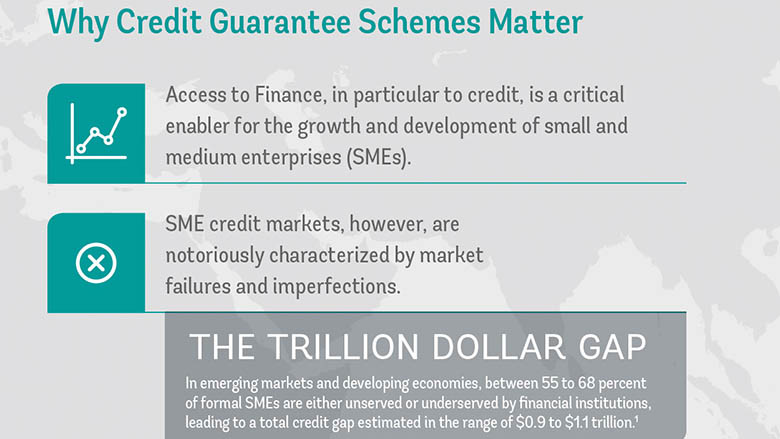Credit markets for small and medium size enterprises (SMEs) are characterized by market failures and imperfections.
Up to 68% of formal SMEs in emerging markets are either unserved or underserved by financial institutions, with a resulting credit gap estimated to be close to $1 trillion.
Public credit guarantee schemes (CGSs) are a common form of government intervention to unlock finance for small and medium enterprises (SMEs). More than half of all countries in the world have a CGS for SMEs and the number is growing.
A credit guarantee scheme provides third-party credit risk mitigation to lenders through the absorption of a portion of the lender’s losses on the loans made to SMEs in case of default, typically in return for a fee.
However, the international community lacks a common set of principles or standards that can help governments establish, operate and evaluate CGSs for SMEs.
Now, the World Bank Group and the FIRST Initiative have launched a new tool to help governments implement public credit guarantee schemes. The tool is intended to become the standard for effectively and efficiently establishing and running public CGSs for SMEs around the world.
The 16 principles cover four key areas that are critical for the success of CGSs.
Legal and regulatory framework
1. Establish the CGS as an independent legal entity.
2. Provide adequate funding and keep sources transparent.
3. Promote mixed ownership and treat minority shareholders fairly.
4. Supervise the CGS independently and effectively.
Corporate governance and risk management
5. Clearly define the CGS mandate.
6. Set a sound corporate governance structure with an independent board of directors.
7. Design a sound internal control framework to safeguard the operational integrity.
8. Adopt an effective and comprehensive enterprise risk management framework.
Operational framework
9. Clearly define eligibility and qualification criteria for SMEs, lenders, and credit instruments.
10. Ensure the guarantee delivery approach balances outreach, additionality, and financial sustainability.
11. Issue partial guarantees that comply with prudential regulation and provide capital relief to lenders.
12. Set a transparent and consistent risk-based pricing policy.
13. Design an efficient, clearly documented, and transparent claim management process.
Monitoring and evaluation
14. Set rigorous financial reporting requirements and externally audit financial statements
15. Publicly disclose non-financial information periodically.
16. Systematically evaluate the CGS’ performance and publicly disclose the findings.

